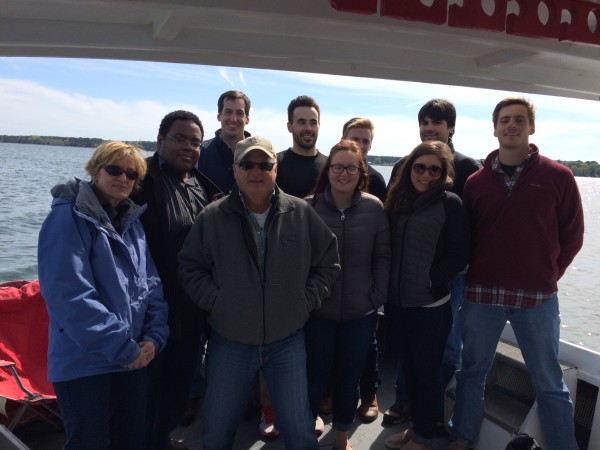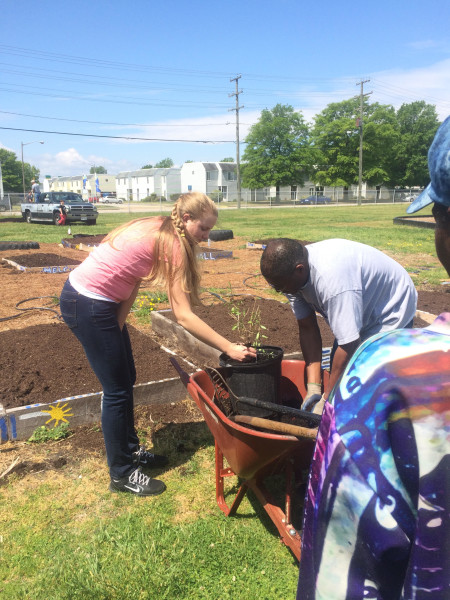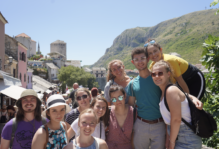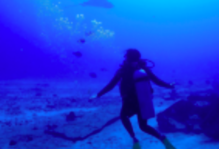Environmental Law: A Different Kind of Sustainable Change
Elizabeth Andrews, the new director of the Virginia Coastal Policy Center (VCPC) and a William & Mary alumnus, has patiently watched as opinions and attitudes regarding environmental policy have evolved. One of the most common environmental policy issues that VCPC deals with is sea level rise and recurrent flooding in Virginia, especially in the Hampton Roads area. What she wants people to realize is that flooding is changing our waterfronts and is changing our communities today. In an effort to make this point clear to her students, Elizabeth recounts a trip that they took to Norfolk a few weeks ago to meet with Mary Carson Saunders Stiff, a Wetlands Watch employee and VCPC alumna:
“We had them walk around in a circle on a bridge and said ‘here’s the Chrysler Museum, the area around it floods on a regular basis. They just had to do a big, expensive renovation to protect all the artwork from flooding. And over here is a church that keeps flooding to the point that they send the NOAA Tides App out to their congregants so that they know when they can park in the parking lot.”
The VCPC at William & Mary’s Law School serves as the intersection between science, law, and policy. A partnership between the W&M Law School, VIMS, and the Virginia Sea Grant Program, VCPC is building the next generation of environmental lawyers and working to address pressing environmental issues on a local, state, and federal level. VCPC students, as part of this clinical law program, partake in two practicums in which they research an environmental topic for a contracting partner and work to answer legal questions and the policies surrounding it. “We need bright minds like the students and directors of the Virginia Coastal Policy Center to guide us as to how to adapt to or mitigate these [environmental] changes,” says Alfred Gabbin, a VCPC student in the program.

VCPC Practicum I students on a field trip to the Middle Peninsula. Photo courtesy of Elizabeth Andrews
VCPC works on a variety of short and long term projects that hit on all three pillars of sustainability: environmental, economic, and social. For example, it is researching the extent to which National Flood Insurance Program regulations recognize and incorporate green infrastructure, working with a state agency to rewrite policies for Virginia to provide to the National Oceanic and Atmospheric Administration (NOAA), and helping to analyze the impacts of sea level rise and climate change in the Chesapeake Bay area. Gabbin and Emily Gabor, two VCPC students, shared how their work with the Southeast Community Project in Newport News hits in all of these three categories. The Southeast community is a low lying area that is, and will continue to be heavily impacted by sea level rise. Gabor and Gabbin have been helping the city government to come up with a plan to help prevent as much damage as possible.
Environmental
Newport News, along with much of the Hampton Roads area, is low lying and already experiencing the detrimental effects of sea level rise. Gabor and Gabbin have teamed with the City of Newport News and the Newport News Redevelopment and Housing Authority to find the best conservation strategies to protect the land and properties in areas predicted to be affected by sea level rise in the near future. The city is holding certain areas of land to help combat sea level rise, but they have yet to create conservation easements for the property. Putting these kinds of policies in place can help to protect coastal environments that are threatened by sea level rise. Gabor and Gabbin are helping the city and the community to understand these impacts of climate change and sea level rise so that policies can be put into place to help mitigate flooding.
Economic
“The City is hoping to redevelop the community. We are looking into how this will affect current residents,” says Gabor, who explains that adjusting zoning regulations to eliminate high-density or multi-family houses could leave many residents at a greater risk of being impacted by the threats of sea level rise. By working with city officials and helping to analyze community development plans, Gabbin and Gabor can help to ensure that environmental concerns are taken into consideration before making drastic changes that could put families at risk.
Social
Aside from many of the economic struggles that many families of the Southeast Community face, it is also a socially vulnerable community that is more prone to succumbing to the impacts of environmental issues. Among lower income communities like this one, sea level rise can take a heavy toll on residents who cannot afford to move from vulnerable areas or take measures to protect themselves and their properties from damage. Rather than changing the socioeconomics of the neighborhood, this project is hoping to help the City to find ways to protect both the environment and its people. “Our project is intended to foster communication between the City and the residents, and to help the residents understand what is happening,” says Gabor.
What lies in the future for VCPC? Most prominently, a new space in the Law School to call their own and a new Commonwealth Center for Recurrent Flooding Resiliency, which is a partnership between VCPC, VIMS and ODU that will be established and funded by the General Assembly as of July 1. This Center will serve as a liaison between state agencies and localities and the federal government to collaboratively research and address coastal ecosystem change. Additionally, VCPC will be holding its annual fall conference on December 2, focusing on climate change and the loss of working waterfronts. All W&M students are welcome to attend this event in addition to the closing reception that will be held at the Muscarelle. There are also a number of events hosted by VCPC and the Student Environmental and Animal Law Society (SEALS) at the Law School that are open to W&M and VIMS students. In particular, Gabor and Gabbin hosted an Arbor Day celebration on April 23rd in the Southeast Community to celebrate William & Mary’s commitment to sustainability in local communities like the Southeast Community.
One of the best aspects of VCPC is that their students come from a variety of backgrounds. From biology majors to English majors, environmental law is pursued by a wide variety of students, bringing together an eclectic community to solve some of the most pressing policy issues of our time. Gabor has always been interested in environmental law and how it relates to environmental justice. Gabbin, on the other hand, is a Williamsburg native who started law school in Connecticut, and has come to VCPC to finish his last year focusing on environmental law and work with the community in which he was raised. “This is my home and I am interested in being a part of how we deal with impending sea level rise and climate change,” says Gabbin. As for Professor Andrews, she’s happy to be back at W&M. Having received her bachelor’s in anthropology there before going on to pursue a law degree and a career in environmental law, she says, “One of the greatest things about W&M is the liberal arts education because it’s such a wonderful basis for so many things.”
Want to get involved?
- Learn more about VCPC
- Come to VCPC’s fall conference on December 2, 2016





No comments.
Comments are currently closed. Comments are closed on all posts older than one year, and for those in our archive.